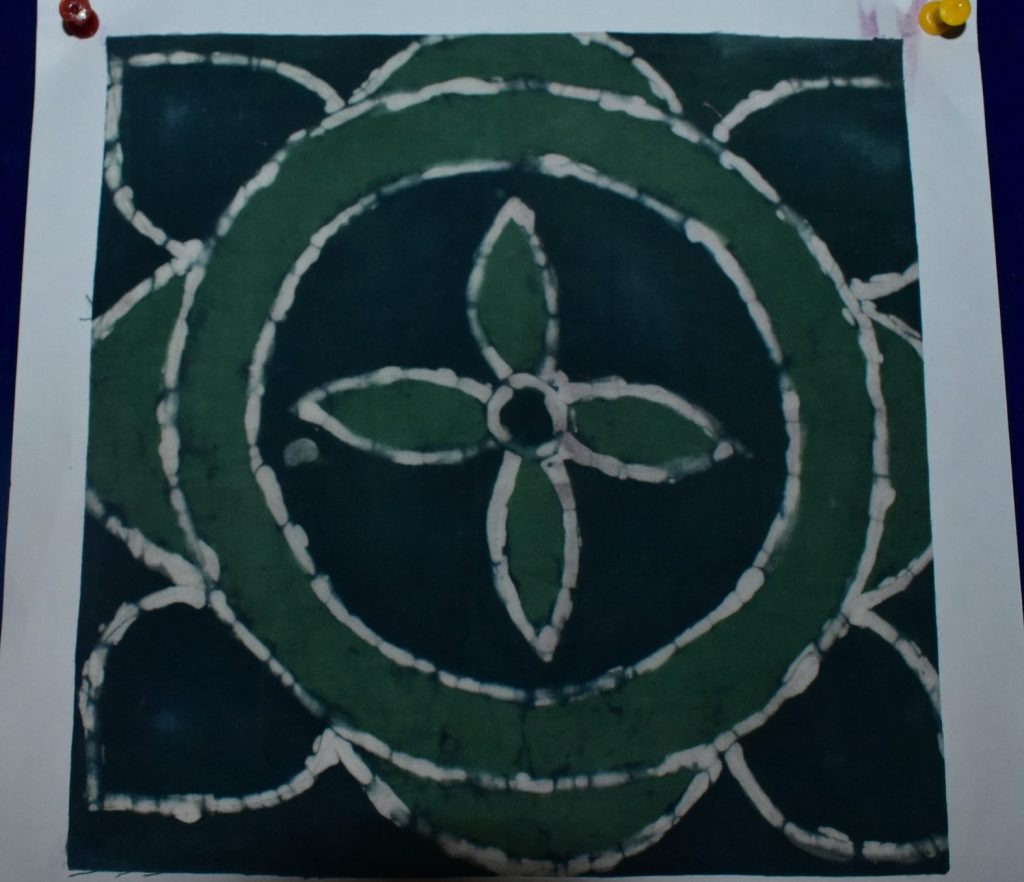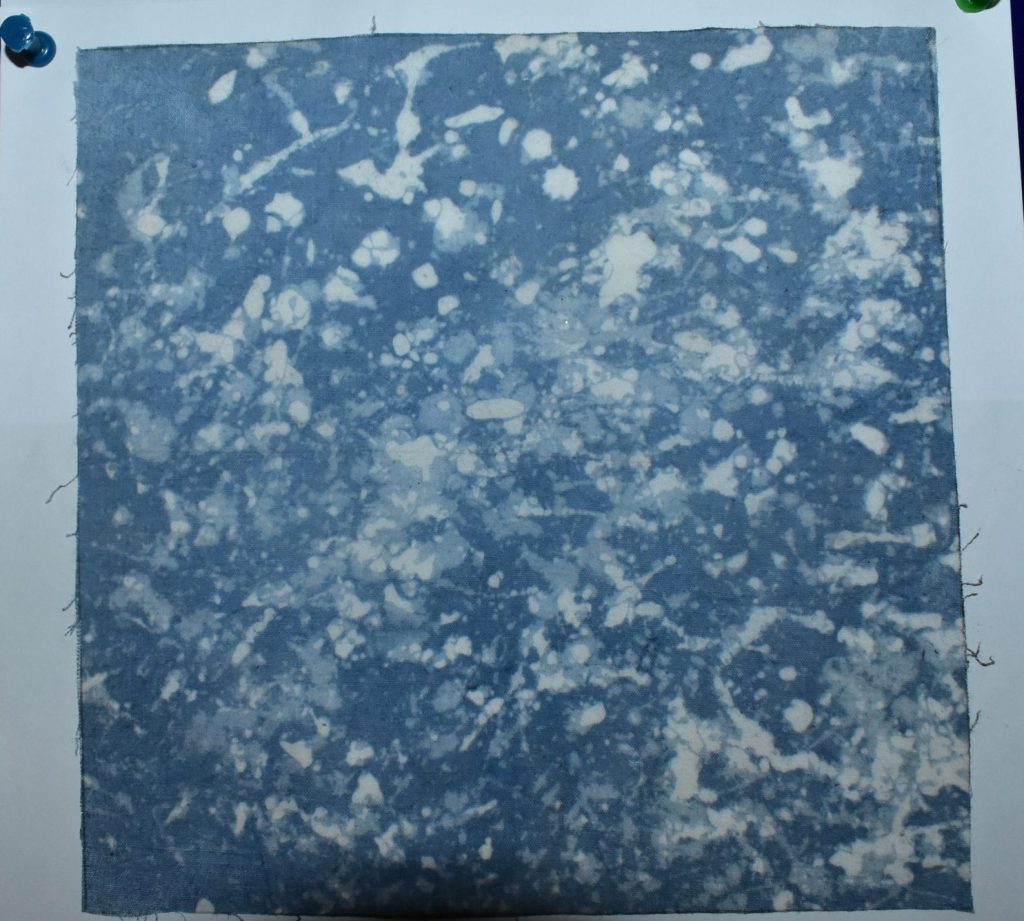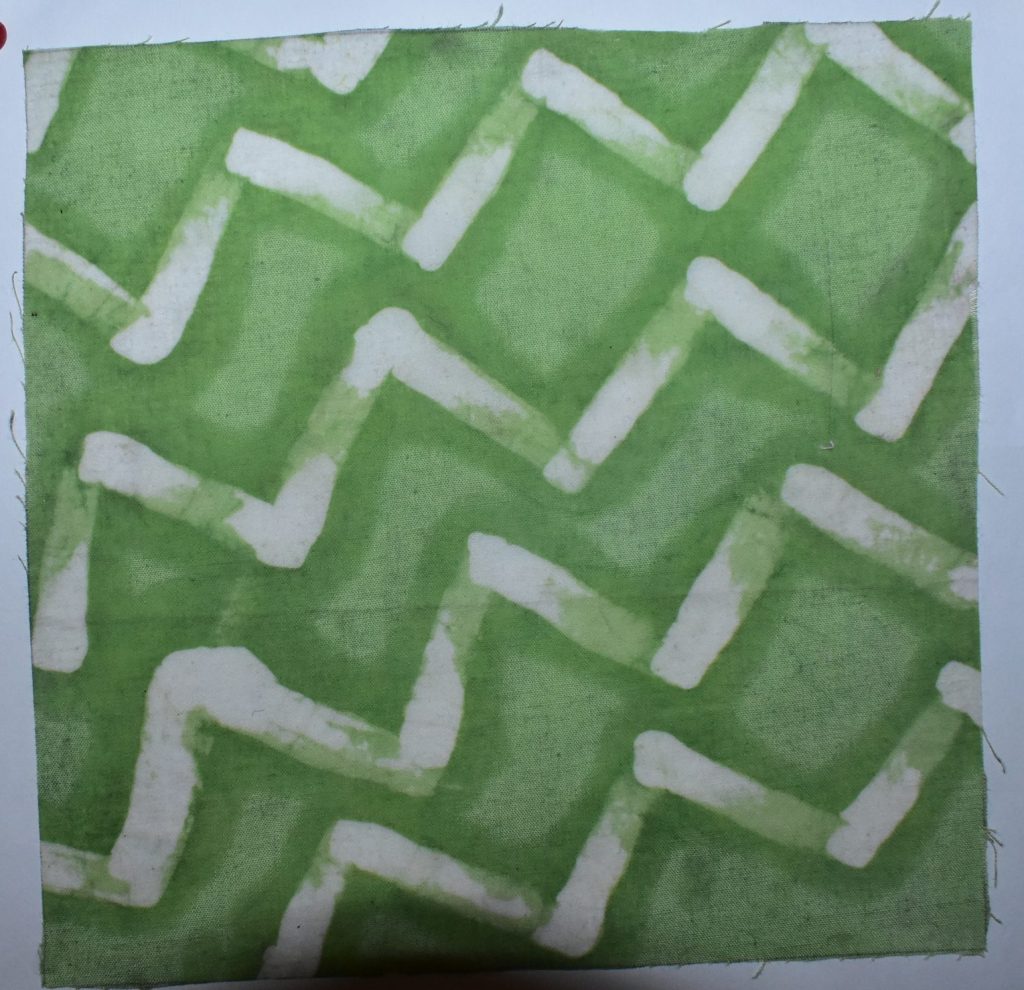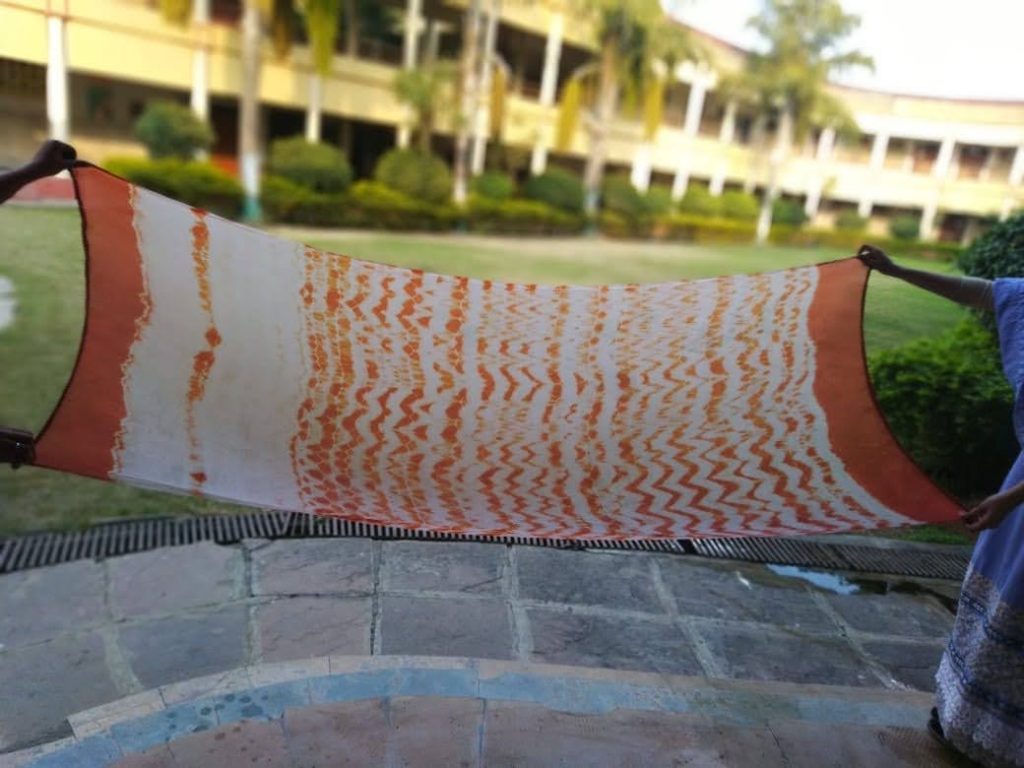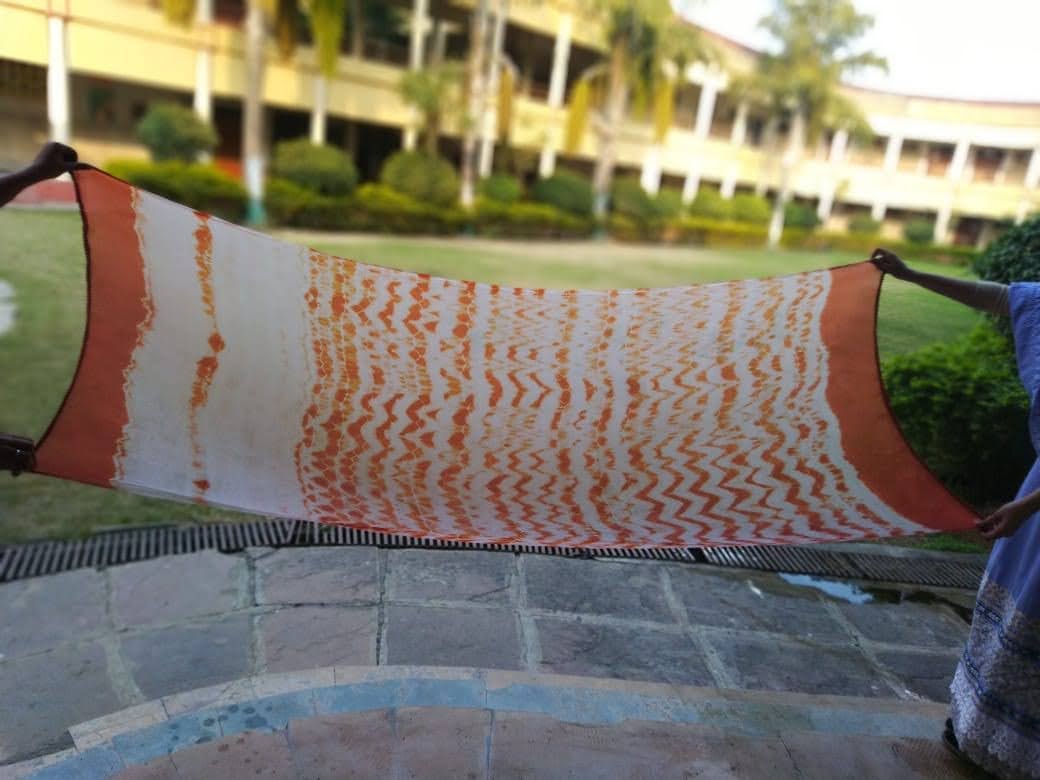
Tie-dyeing & Batik Technique
Department: Faculty of Fashion Design
Title: “Tie-dyeing & Batik Technique”
Brief description/ Remarks:
Department of Fashion Design organizes workshop on “Tie-dyeing & Batik Technique” in Textile Lab for the students of I year. Students get an opportunity to know about Tie-dyeing & batik Technique. Batik print is a unique technique of coloring or ornamenting the cloth by hiding a part of it with a wax coat and then dyeing so that the waxed area keep their actual color which acts as a resist. When the wax is removed, the contrast between the dyed and undyed areas makes the pattern. Batik art involves three stages such as waxing, dyeing and dewaxing (removing the wax). There are some more sub-processes like preparing the cloth, stretching the cloth on the frame, preparing the dye, dye the cloth, dewaxing and washing. Batik production techniques are generally being divided into three types such as Canting (tjanting or tulis), Cap (block printing) and Silk screening (screen printing). Hand Batik printing portrays an array of themes, which include religious themes as well as abstract patterns. The batik print on fabric represents cultural elements of their respective states and also influenced by the nature. Students developed the samples using single and two colour dyes.
Tie-dye techniques involves tying knots in the cloth to create different patterns and then dyeing it. There are different types of tie-dye techniques like Bandhani, Lehriya, Shibori, Swirl etc.
Techniques of Tie-die and Batik gives students the knowledge about our traditional Indian Textiles. It also creates a career opportunity for students who want to start their own business.
